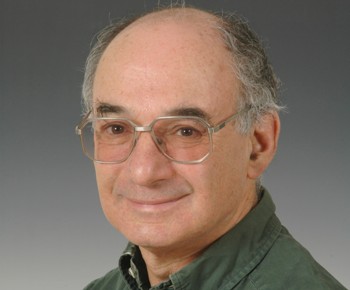| | 20 September, 2011
| | Hebrew University research team discovers path to blocking fatal bacterial toxins that have resisted all attempts to stop them | |
 | | Prof. Raymond Kaempfer. ''A surprising result with enormous implications'' |
|
A team of researchers at the Hebrew University of
Jerusalem says it has found a way to block a group of
fatal bacterial toxins that have to date resisted all
attempts to arrest them through the use of conventional
drugs.
These toxins, called superantigens, are produced by a
group of “violent” staphylococcal and streptococcal
bacteria. When these bacteria attack humans, they set
off an extreme immune reaction described as an
“immune storm,” that is, an immune response of a
magnitude higher in intensity than during a regular
immune reaction. The result is often fatal toxic or septic
shock brought on by the excessive immune response.
Working to develop the first effective antidote under
funding from the Defense Advanced Research Projects
Agency of the US Department of Defense and the US
National Institutes of Health, the laboratory headed by
Prof. Raymond Kaempfer of the Institute for Medical
Research Israel Canada (IMRIC) at the Hebrew
University Faculty of Medicine, has studied how
superantigen toxins engage the immune system. The
researchers discovered that in order to exert its harmful
action, a superantigen must first bind to a protein on the
surface of the human immune cell, a receptor called
CD28.
CD28 has been known for a long time as a key
participant in every immune response, but its ability to
recognize microbial components -- the superantigens --
came as a complete surprise. The Kaempfer team
discovered that superantigens do their lethal work by
co-opting CD28 as their receptor, and that binding of a
superantigen to CD28 is the key in the pathway to an
immune storm.
They mapped the regions where the superantigen and
CD28 contact each other and found that to induce an
immune storm, superantigens must bind specifically into
that part of the CD28 molecule where, normally, it pairs
with another CD28 molecule.
Using that insight, they next designed decoys, short
protein fragments that mimic the contact domain in the
superantigen or in CD28. Such decoys, they could
show, act as a monkey wrench that blocks the
engagement of CD28 receptor by the superantigen
toxin, thereby inhibiting the overly strong immune
response and protecting animals from the toxic
consequences, including from death.
All the superantigen toxins function via the same CD28
receptor, rendering the decoys broadly effective as
protective agents. The decoys proved safe in healthy,
normal, laboratory animals.
These findings provide a novel therapeutic approach
against toxic shock. The decoys are host-oriented
therapeutics, directed at the human immune system
itself, rather than at the pathogen. Using a host-oriented
therapeutic, resistance cannot arise in the infecting
bacteria or in the toxins because the decoy targets a
human immune receptor that is constant and will not
change.
The work of Kaempfer and his team will be published in
the PLoS Biology journal on
Sept. 13. Reviewers who have seen an advanced copy
have called the work “a surprising result with enormous
implications” and “a paradigm shift in superantigen
research.”
The Kaempfer team involved senior researcher Dr. Gila
Arad and graduate students Revital Levy, Iris Nasie, Ziv
Rotfogel, Uri Barash, Emmanuelle Supper, Tomer
Shpilka, and Adi Minis, with the support of lab technician
Dalia Hillman.
|
|


